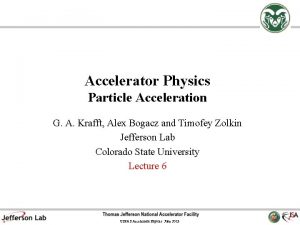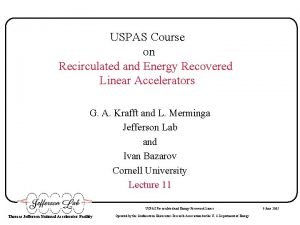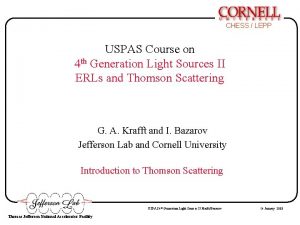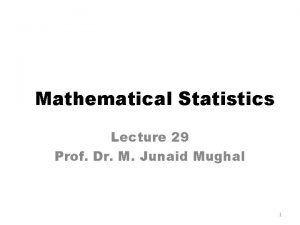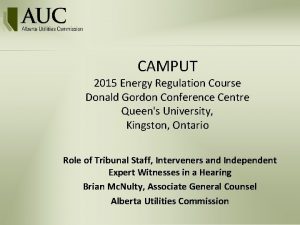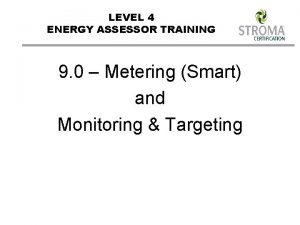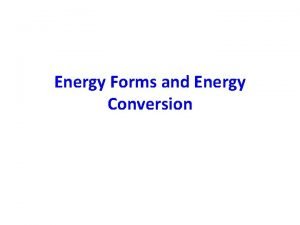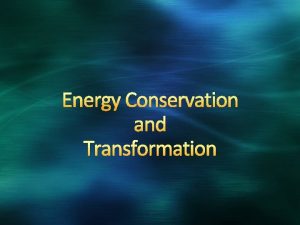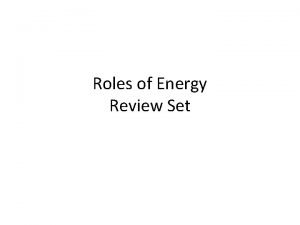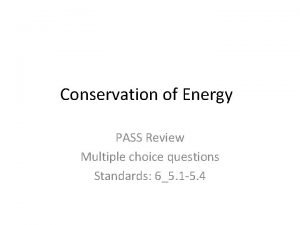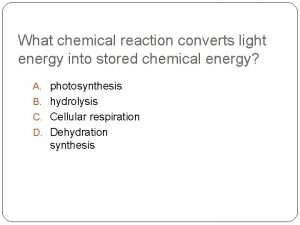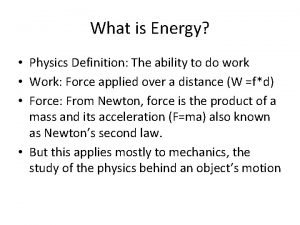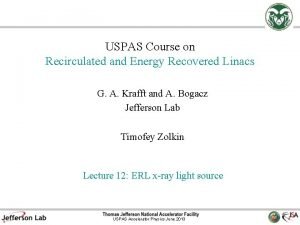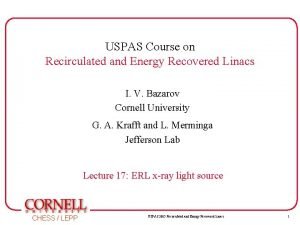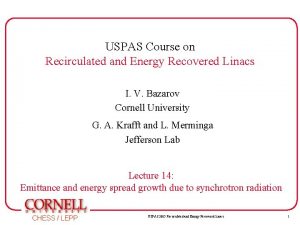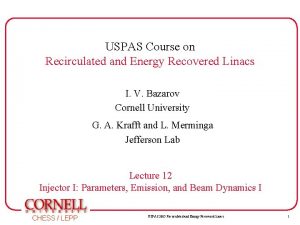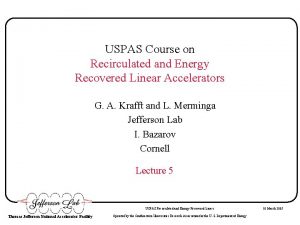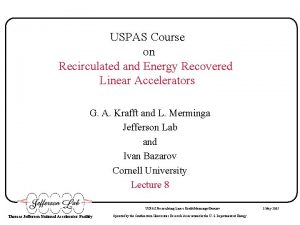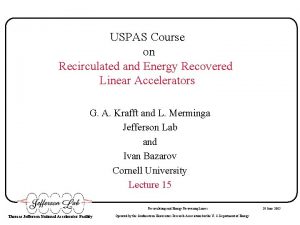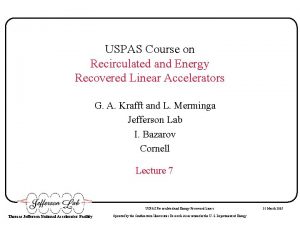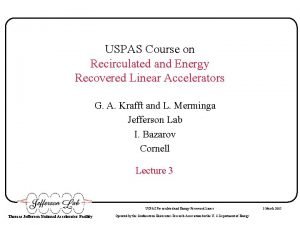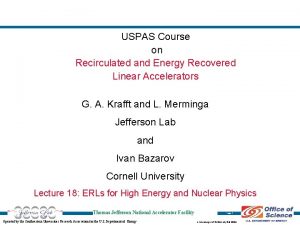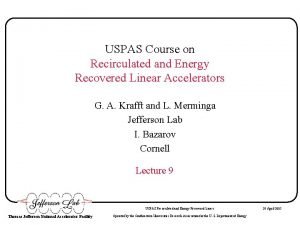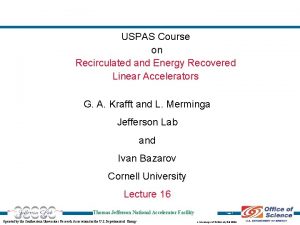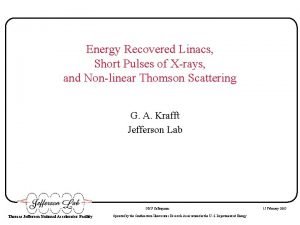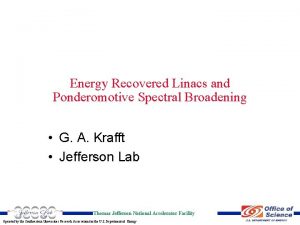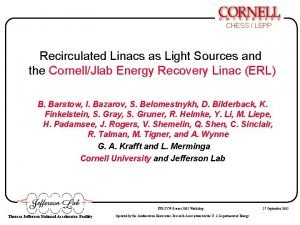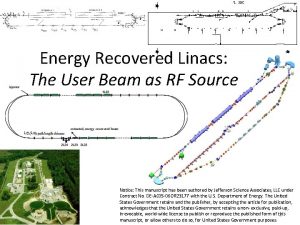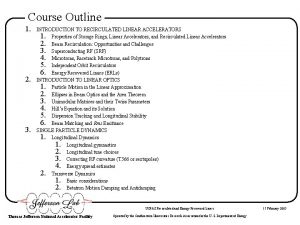USPAS Course on Recirculated and Energy Recovered Linacs
























![Injector performance Takes several 105 simulations n[mm-mrad] (0. 73+0. 15/ z[mm]2. 3) q[n. C] Injector performance Takes several 105 simulations n[mm-mrad] (0. 73+0. 15/ z[mm]2. 3) q[n. C]](https://slidetodoc.com/presentation_image/27827962c46b775b4cfc9c2f56b42d35/image-25.jpg)



















- Slides: 44

USPAS Course on Recirculated and Energy Recovered Linacs I. V. Bazarov Cornell University G. A. Krafft and L. Merminga Jefferson Lab Lecture 13 Injector II: Beam Dynamics II and Technology CHESS / LEPP USPAS 2005 Recirculated and Energy Recovered Linacs 1

Space charge In a typical bunched beam from a gun, both charge and current density are functions of transverse & longitudinal coordinates. This makes space charge dominated behavior highly nonlinear. For beam envelope equation we will assume that and Jz are independent of transverse coordinate and that the beam is not bunched (aspect ration << 1). CHESS / LEPP USPAS 2005 Recirculated and Energy Recovered Linacs 2

“Collisional” vs. “smooth” self-fields It would seem that the easiest approach is to calculate Lorentz force of all electrons directly (this would encompass practically all the behavior of the beam). This is not feasible because the number of evaluations for each time step is ~ N 2, with N ~ 1010. Taking the fastest supercomputer with 100 TFLOPS, one estimates ~ year(s) per time step (and one may need something like ~104 steps). Instead, people use macroparticles in computer simulations with the same e/m ratio When N forces are smooth; when N 1 grainy collisional forces dominate. Envelope equation assumes the first scenario. How to determine quantitatively “collisional” vs. “smooth” behavior of the space charge in the beam? CHESS / LEPP USPAS 2005 Recirculated and Energy Recovered Linacs 3

Debye length and plasma frequency Three characteristic lengths in the bunch: bunch dimension; interparticle distance; Debye length Interactions due to Coulomb forces are long-range; Debye length is a measure of how ‘long’ (screen-off distance of a local perturbation in charge). for nonrelativistic case: for relativistic case: CHESS / LEPP USPAS 2005 Recirculated and Energy Recovered Linacs 4

Debye length: beam dynamics scenarios YES single-particle behavior dominates; true when either energy or beam temperature is large (emittance-dominated) NO collective forces are important YES “smooth” force; Liouville’s theorem can be defined in 6 -D phase space; if forces are linear rms emittance is also conserved NO fields of individual particles become important; one ends up having 6 N-D phase space to deal with in the worst case; beam tends to develop ‘structure’ CHESS / LEPP USPAS 2005 Recirculated and Energy Recovered Linacs 5

Equilibrium distribution Similar to thermodynamics and plasma physics, there may exist equilibrium particle distributions (i. e. those that remain stationary). Vlasov theory allows one to find such distributions (assumes collisions are negligible, but they are the ones responsible to drive the distribution to equilibrium!). In particular, in a focusing channel, equilibrium transverse density obeys a well-known Boltzmann relation CHESS / LEPP USPAS 2005 Recirculated and Energy Recovered Linacs 6

Equilibrium distribution (contd. ) Analytically, two extreme cases uniform Gaussian CHESS / LEPP USPAS 2005 Recirculated and Energy Recovered Linacs 7

Perveance and characteristic current Let’s derive beam envelope equation (i. e. we assume that selfforces are smooth). We have almost derived the equation already (previous lecture’s paraxial ray equation). Two terms are missing – due to space charge and emittance ‘pressure’. Uniform laminar beam in the absence of external forces: CHESS / LEPP USPAS 2005 Recirculated and Energy Recovered Linacs 8

Emittance ‘pressure’ term x x In a drift 0 z: and For x: or CHESS / LEPP USPAS 2005 Recirculated and Energy Recovered Linacs 9

Beam envelope equation From paraxial ray equation with the additional terms, one obtains adiabatic solenoid RF focusing space charge of cavity edge space charge dominated CHESS / LEPP angular momentum ‘increases’ emittance dominated USPAS 2005 Recirculated and Energy Recovered Linacs 10

Emittance evolution due to space charge We have seen that beam will evolve from space-charge dominated to emittance dominated regimes as it is being accelerated. At low energies, various longitudinal ‘slices’ of the bunch experience different forces due to varying current ‘bow-tie’ phase space is common. Important realization is that much of these space charge emittance growth is reversible through appropriate focusing (and drifts), so-called emittance compensation. Obviously, this emittance compensation should take place before (or rather as) the beam becomes ultrarelativistic (and emittance-dominated). CHESS / LEPP USPAS 2005 Recirculated and Energy Recovered Linacs 11

Emittance growth in RF guns (without comp. ) Kim analyzed emittance growth due to space charge and RF (NIM A 275 (1989) 201 -218). His analysis applies to beam in RF guns. He has found: e. g. 100 MV/m RF gun ( = 10. 5 cm): = 1. 64, phase (to minimize rf emittance) 0 = 71 ( 90 ), laser width and length x = 3. 5 mm, z = 0. 6 mm /4 /2 CHESS / LEPP USPAS 2005 Recirculated and Energy Recovered Linacs 12

Compensation Carlsten discovered in simulations that emittance can be brought down and gave a simple explanation for the effect (NIM A 285 (1989) 313 -319). 8 n. C CHESS / LEPP USPAS 2005 Recirculated and Energy Recovered Linacs 13

Emittance compensation from envelope eqn. Serafini and Rosenzweig used envelope equation to explain emittance compensation (Phys. Rev. E 55 (1997) 7565). includes solenoid and RF tags long. slice in the bunch For space charge dominated case in absence of acceleration Brillouin flow 0: CHESS / LEPP USPAS 2005 Recirculated and Energy Recovered Linacs 14

Emittance compensation (contd. ) 0 Oscillations near equilibrium: Important: frequency of small oscillations around equilibrium does not depend on . E. g. for beam with (0, ) = 0 and (0, ) = eq( ) + ( ) = 0: CHESS / LEPP USPAS 2005 Recirculated and Energy Recovered Linacs 15

Emittance compensation (contd. ) x • slices oscillate in phase space around different equilibria but with the same frequency • ‘projected’ emittance reversible oscillations when / eq << 1, unharmonicity shows up when is not small x • ignores the fact that beam aspect ratio can be >> 1 (e. g. at the cathode) CHESS / LEPP USPAS 2005 Recirculated and Energy Recovered Linacs 16

Emittance compensation (contd. ) Including acceleration term and transforming from ( , z) ( , y) in the limit >> 1 Particular solution that represents generalized Brillouin flow or ‘invariant envelope’: phase space angle is independent of slice Matching beam to ‘invariant envelope’ can lead to ‘damping’ of projected rms emittance. CHESS / LEPP USPAS 2005 Recirculated and Energy Recovered Linacs 17

Emittance compensation and tracking Serafini and Rosenzweig’s paper provides a recipe for emittance compensation, which works for simple cases (e. g. matching beam into long focusing channel / linac in the injector). For other more complicated scenarios one can try solving envelope equation for slices (or write a code to do that). Particle tracking is indispensable for analysis and design of the injector where the assumptions made are invalid or theory is Ferarrio (INFN) too complicated to be useful. CHESS / LEPP USPAS 2005 Recirculated and Energy Recovered Linacs 18

Computer Modeling • It used to be the case that extensive modeling of the injector was too demanding in terms of time & computer resources to allow finding optima for generating bright beams by varying more than a couple (or so) parameters. • This is no longer the case. Advances in space charge codes & computing abilities allow extensive study / optimization of nonlinear space charge problem in the injector with good precision and minimal number of assumptions. • Numerical studies can give insights and better understanding of beam dynamics in the injector. CHESS / LEPP USPAS 2005 Recirculated and Energy Recovered Linacs 19

Space charge codes Different approaches are used (e. g. envelope equation integration, macroparticle tracking, various meshing scenarios, etc. ). Mesh method works as following: 1) transform to rest frame of the reference particle 2) create mesh (charge) and cell grid (electrostatic fields) 3) create table containing values of electrostatic field at any cell due to a unit charge at any mesh vertex (does not need to be recalculated each time step) CHESS / LEPP USPAS 2005 Recirculated and Energy Recovered Linacs 20

Space charge codes (contd. ) 4) assign macroparticle charges to mesh nodes, e. g. 1, 2, 3, and 4 vertices get QA 1/A, QA 2/A, QA 3/A, and QA 4/A respectively, where A 1+A 2+A 3+A 4 = A = Z R 5) calculate field at each cell by using mesh charges and table, e. g. 6) find fields at macroparticle position by weighting 7) Apply force to each macroparticle 8) Lorentz back-transform to the lab frame CHESS / LEPP USPAS 2005 Recirculated and Energy Recovered Linacs 21

Example of injector optimization Fields: DC Gun Voltage (300 -900 k. V) 2 Solenoids Buncher SRF Cavities Gradient (5 -13 MV/m) SRF Cavities Phase Positions: 2 Solenoids Buncher Cryomodule Bunch & Photocathode: Ethermal Charge Laser Distribution: Spot size Pulse duration (10 -30 ps rms) {tail, dip, ellipticity} x 2 Total: 22 -24 dimensional parameter space to explore CHESS / LEPP USPAS 2005 Recirculated and Energy Recovered Linacs 22

Examples of beam dynamics: 80 p. C charge CHESS / LEPP USPAS 2005 Recirculated and Energy Recovered Linacs 23

Examples of beam dynamics: 0. 8 n. C charge CHESS / LEPP USPAS 2005 Recirculated and Energy Recovered Linacs 24
![Injector performance Takes several 105 simulations nmmmrad 0 730 15 zmm2 3 qn C Injector performance Takes several 105 simulations n[mm-mrad] (0. 73+0. 15/ z[mm]2. 3) q[n. C]](https://slidetodoc.com/presentation_image/27827962c46b775b4cfc9c2f56b42d35/image-25.jpg)
Injector performance Takes several 105 simulations n[mm-mrad] (0. 73+0. 15/ z[mm]2. 3) q[n. C] CHESS / LEPP USPAS 2005 Recirculated and Energy Recovered Linacs 25

Optimal initial (laser) distribution If space charge force is linear within a bunch, there is no rms emittance growth associated with it. Uniform transverse distribution for cylindrical continuous beam is one example. For bunched beam, 3 D ellipsoid satisfies the requirement Under linear self-forces, the shape will remain to be elliptical. Luiten et. al suggested using elliptical 2 D shape ‘ -function’ laser pulse (~30 fs) to produce 3 D ellipsoid under the influence of space charge near the cathode (PRL 93 (2004) 094802). density CHESS / LEPP 30 fs 600 fs but more energy spread! USPAS 2005 Recirculated and Energy Recovered Linacs 26

Optimal initial (laser) distribution (contd. ) Several things change the idealistic 3 D ellipsoid picture: 1) image charge at the cathode Phys. Rev. ST-AB 8 (2005) 034202 2) distortion due to bunching example for DC gun optimal shape (80 p. C) CHESS / LEPP USPAS 2005 Recirculated and Energy Recovered Linacs 27

Example of profile evolution: 80 p. C charge CHESS / LEPP USPAS 2005 Recirculated and Energy Recovered Linacs 28

Technology: some highlights CHESS / LEPP USPAS 2005 Recirculated and Energy Recovered Linacs 29

NCRF gun • Arguably the best gun choice for low duty beam – so far the brightest injector beam (low duty factor) was measured from a NCRF gun • Boeing FEL project has demonstrated high average current capability (still the highest ave. current) • Ohmic wall losses pose heat management challenge gradient < 10 MV/m for CW operation • As a result, maintaining good vacuum condition is difficult, which affects cathode lifetime • LANL/AES project seeks to produce 1 A beam from a NCRF gun CHESS / LEPP USPAS 2005 Recirculated and Energy Recovered Linacs 30

CHESS / LEPP USPAS 2005 Recirculated and Energy Recovered Linacs 31

DC gun • 3 ongoing ERL projects are planning / using this type • Operation at higher fields (~10 MV/m) than demonstrated is crucial for good emittance field emission gradient polishing / dielectric coating • Cathode lifetime is an issue for all high average current ERLs ion backbombardment and cathode chemical poisoning exceptional vacuum CHESS / LEPP USPAS 2005 Recirculated and Energy Recovered Linacs 32

SRF gun • • Avoids wall losses problem of NCRF guns Higher peak field than in DC gun (~ 50 MV/m) Cathode issues: contamination & thermal management Superconductor does not allow putting magnetic field close to the cathode. Possible solutions: - wall retraction - magnetic mode - downstream focusing CHESS / LEPP USPAS 2005 Recirculated and Energy Recovered Linacs 33

CHESS / LEPP USPAS 2005 Recirculated and Energy Recovered Linacs 34

DC/SFR/NCRF: emit. compensation works 1 n. C pulsed! Ecath = 120 MV/m laser = 2. 7 ps rms laser = 0. 5 mm rms laser z = 0. 08 mm Ecath = 43 MV/m laser = 5. 8 ps rms laser = 0. 85 mm rms laser z = 0. 12 mm 2 18 MV/m Ecath / Es. charge Ecath = 8 MV/m laser = 13 ps rms laser = 2 mm rms laser z = 0. 12 mm 2 6 MV/m = Ecath / Es. charge 2 1 MV/m = Ecath / Es. charge same simulated emittance CHESS / LEPP USPAS 2005 Recirculated and Energy Recovered Linacs 35

Thermal emittance and cathode field! CHESS / LEPP USPAS 2005 Recirculated and Energy Recovered Linacs 36

Photocathode requirements & technology • Ideal photocathode has little thermal emittance, high QE, fast response time, and robust (lifetime!) • NEA Ga. As photocathodes seem to fit DC guns nicely (longish pulse OK due to downstream compression, good thermal emittance allows lower operating field), may be too long for RF guns for lowest emittance • Optimal wavelength for Ga. As may be not near the band-gap, e. g. shorter wavelength faster response time better temporal shape vs. poorer thermal emittance trade-off • Multialkali cathodes demonstrate good lifetime, QE, and fast response, somewhat inferior thermal emittance, need higher photon energy Semiconductor superlattice theoretically allows superior performance to bulk semiconductors both in terms of QE, smaller thermal emittance CHESS / LEPP USPAS 2005 Recirculated and Energy Recovered Linacs 37

Cathodes for ERLs CHESS / LEPP USPAS 2005 Recirculated and Energy Recovered Linacs 38

CHESS / LEPP USPAS 2005 Recirculated and Energy Recovered Linacs 39

Diamond secondary emission cathode idea enhancement factor ~ 200 Chang (BNL) CHESS / LEPP USPAS 2005 Recirculated and Energy Recovered Linacs 40

Laser • Critical component of each photoinjector, any laser problems propagate along the entire accelerator • R&D challenges in meeting shape requirements for best beam dynamics, programmable time structure of pulses • For light sources with pump-probe experiments, timing synchronization between electron pulses and pump laser requires ~10 fs synchronization (~ km distributed timing system) CHESS / LEPP USPAS 2005 Recirculated and Energy Recovered Linacs 41

Temporal & transverse pulse shaping Tomizawa (SPring-8) CHESS / LEPP USPAS 2005 Recirculated and Energy Recovered Linacs 42

Problems 1) In computer simulations of the space charge inside the bunch, one uses ‘macroparticles’ with the same charge to mass ratio to reduce the required computational resources. Discuss what happens to simulated beam’s Debye length and plasma frequency as opposed to real case scenario. In this respect, what artificial effects may be introduced in simulations? 2) Show that transformation of phase ellipse parameters for a drift 0 z are given by CHESS / LEPP USPAS 2005 Recirculated and Energy Recovered Linacs 43

Books M. Reiser, Theory and design of charged particle meams, Wiley & Sons, 1996 J. D. Lawson, The physics of charged-particle beams, Oxford Press, 1988 Also free online books at http: //www. fieldp. com/educa. html M. Rabinovitz, “Electrical conductivity in high vacuum”, SLAC-TN-68 -23 J. I. Pankove, Optical processes in semiconductors, Prentice. Hall, 1971 CHESS / LEPP USPAS 2005 Recirculated and Energy Recovered Linacs 44
 Uspas sport
Uspas sport Uspas
Uspas Uspas
Uspas Energy energy transfer and general energy analysis
Energy energy transfer and general energy analysis Energy energy transfer and general energy analysis
Energy energy transfer and general energy analysis Course number and title
Course number and title Mishappening happened
Mishappening happened Recovered memory 17
Recovered memory 17 Royalty suspense account
Royalty suspense account The average zinc concentration recovered from a sample
The average zinc concentration recovered from a sample One and half brick wall
One and half brick wall Course interne course externe
Course interne course externe Camput energy regulation course
Camput energy regulation course Domestic energy assessor course near me
Domestic energy assessor course near me What is the definition of chemical potential energy
What is the definition of chemical potential energy Primary energy and secondary energy
Primary energy and secondary energy Disadvantages of conventional energy
Disadvantages of conventional energy Helmholtz free energy
Helmholtz free energy Renewable energy and energy efficiency partnership
Renewable energy and energy efficiency partnership Potential energy
Potential energy You and your friend both solve a problem involving a skier
You and your friend both solve a problem involving a skier Gravitational potential energy
Gravitational potential energy Kinetic energy and potential energy formula
Kinetic energy and potential energy formula Eroei
Eroei Kinetic
Kinetic Gibbs free energy unit
Gibbs free energy unit How to calculate gibbs free energy
How to calculate gibbs free energy Force formula with distance
Force formula with distance How are thermal energy and temperature different
How are thermal energy and temperature different A hairdryer converts ____ energy into ____ energy.
A hairdryer converts ____ energy into ____ energy. Electrical energy equation
Electrical energy equation How to convert mechanical energy to electrical energy
How to convert mechanical energy to electrical energy Chapter 5 thermal energy answer key
Chapter 5 thermal energy answer key Ln ksp vs 1/t
Ln ksp vs 1/t As nutritional energy passes through the food chain energy
As nutritional energy passes through the food chain energy As a roller coaster goes downhill
As a roller coaster goes downhill Chapter 7 energy conservation of energy
Chapter 7 energy conservation of energy Wind energy is an indirect form of
Wind energy is an indirect form of ________ converts light energy into chemical energy. *
________ converts light energy into chemical energy. * Gravity
Gravity Potential energy examples
Potential energy examples Formula of electric field
Formula of electric field Definition energy in physics
Definition energy in physics What is energy
What is energy Gravitational potential energy vs kinetic energy
Gravitational potential energy vs kinetic energy
